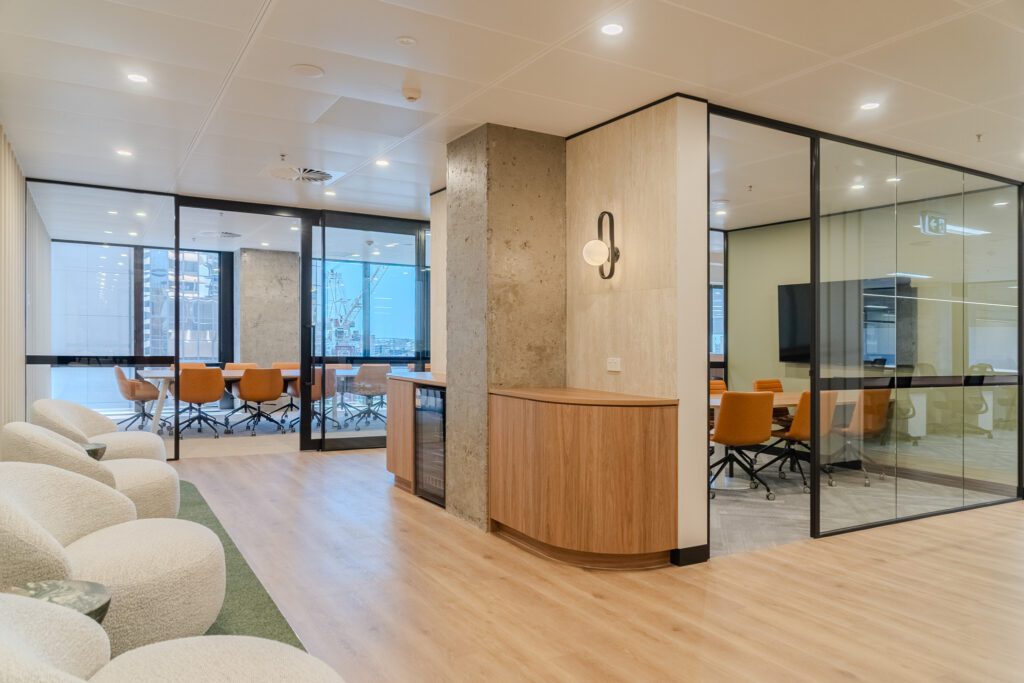Introduction – The Lure of the Spec Fit Out
Speculative fit outs — fully built office spaces delivered before a tenant is secured — is the go-to strategy for most landlords across Australia’s main CBD office markets. The logic is simple: in a competitive leasing market, a “move-in ready” office should lease faster and attract stronger tenants.
And at first glance, that logic makes sense. Tenants want simplicity and speed. Landlords want shorter vacancy and improved building presentation.
But in practice, speculative fit outs don’t guarantee a lease — and in many cases, they can make the overall financial picture a lot worse. Between poor design execution, misaligned suite sizes, and the need to provide heavy leasing incentives on top (of constructions costs), spec fit outs can quickly become an expensive exercise.
Why Landlords Build Speculative Fit Outs
There are valid reasons landlords invest in speculative suites:
- Shorter vacancy periods: A fitted suite photographs well and is easy to inspect.
- Market differentiation: Can help older or secondary assets compete with more modern buildings.
- Appeal to smaller tenants: Plug-and-play spaces suit occupiers seeking quick moves with minimal capex.
- Preserve asset value: Proactive refurbishment maintains relevance and valuation metrics.
- Potential rental premium: A high-quality, well-designed suite should command a better rent.
So, the concept isn’t flawed — it’s the execution that regularly misses the mark and the Landlord’s pay.
When Fit Outs Miss the Market
The most common issue with speculative fit outs is misalignment with actual demand.
- Too often, landlords are advised to build what an agent thinks tenants want rather than what enquiry data actually shows.
- Agents and designers often default to generic layouts — open plan, a couple of offices, a meeting room etc — without understanding demand drivers in their truest form.
- Landlords are now being advised to spec every vacancy so they have no capacity to deliver bespoke fit outs for incoming Tenants which often lead to a much better financial outcome (for the Landlord).
- Brisbane CBD vacancy sits around 8.82%, according to Caden Office Leasing’s October Brisbane CBD Vacancy Tracker — meaning competition for tenants is still strong.
- Add to that an average incentive level of 38.5%, and the economics quickly become tight.
In short, speculative fit-outs only succeed when they directly align with live enquiry patterns — not assumptions.
Design & Delivery: The Hidden Risk
Even if the suite size is right, poor design and finishing can derail leasing potential.
- Many agents don’t engage deeply in the design stage — meaning layouts often lack the leasing perspective needed to attract target tenants.
- Designers, working to landlord-set budgets and timelines, frequently use “cookie-cutter” layouts with little creativity or tenant adaptability.
- The result: fit outs that look new but feel dated — oversized boardrooms, under-lit spaces, awkward traffic flow, and zero opportunity for tenant branding.
- Inconsistent or cheap finishes can also harm a landlord’s brand positioning. A poor fit-out communicates “cheap space,” even when the rent is competitive. Prospective Tenants will generally pay more for better quality space.
Tenants today notice quality and layout efficiency immediately. In a competitive market, design discipline matters as much as rent.
The Financial Trap – Capital + Incentives = Margin Compression
From a financial perspective, this is where the speculative fit-out can become a trap.
- The landlord spends capital upfront — often hundreds of thousands on construction and finishes.
- Then the market still demands heavy incentives — rent-free periods, contribution packages, or early lease breaks — to close the deal.
- The combined effect: the effective rent collapses, even when the face rent looks solid.
- For example, at 38.5% average incentives, the landlord’s true net return may be significantly below the projected model — and that’s before considering the depreciation or eventual strip-out of the fit-out itself.
When you add it up, speculative fit-outs often inflate total incentives rather than reduce them.
When Speculative Fit Outs Work
There are, however, scenarios where speculative fit outs can work extremely well:
- Data-aligned design: The suite size, configuration, and finish are guided by current enquiry data, not assumptions.
- Design Impact: The suites are designed by agent’s who have developed a unique understanding of Tenant demand. This will maximise rents and reduce incentives and leads times.
- High visual impact: Suites present beautifully in photography and inspections without feeling sterile.
- Active agent collaboration: The leasing team helps shape design and size decisions before construction, not after.
When these criteria are met, spec fit outs can reduce downtime and improve tenant engagement — but those are the exceptions, not the rule.
A Smarter Way Forward – Data-Driven & Modular Fit-Outs
The alternative isn’t to abandon spec fit-outs, but to execute them smarter.
- Use live market data: Analyse enquiry trends by size, precinct, and industry before committing to a build. Tools like Caden’s Vacancy Tracker provide this visibility.
- Understand Design: It is now a unique skill for an agent to understand fit out design. Utilising an agent that can design fit outs that suit the buildings target Tenant market can save a Landlord millions of dollars in the long-run.
- Test and refine: Build one or two suites, measure leasing performance, then adjust future rollouts.
- Design with intent: Engage designers who understand leasing psychology — flow, light, first impressions, and adaptability.
This approach balances presentation value with financial prudence.
Conclusion – Build Smart, Not Speculative
Speculative fit outs are not a guaranteed leasing shortcut. In markets like Brisbane, where vacancy remains elevated and incentives remain high, the economics require discipline.
A speculative suite that’s poorly designed, mis-sized, or over-capitalised can easily become a liability.
But a data-driven, tenant-aligned fit out — supported by leasing and design collaboration — can genuinely differentiate an asset.
The difference is simple:
Don’t build to “show something”.
Build to lease something — and make sure the data backs it up.








